I agree Our site saves small pieces of text information (cookies) on your device in order to deliver better content and for statistical purposes. You can disable the usage of cookies by changing the settings of your browser. By browsing our website without changing the browser settings you grant us permission to store that information on your device.
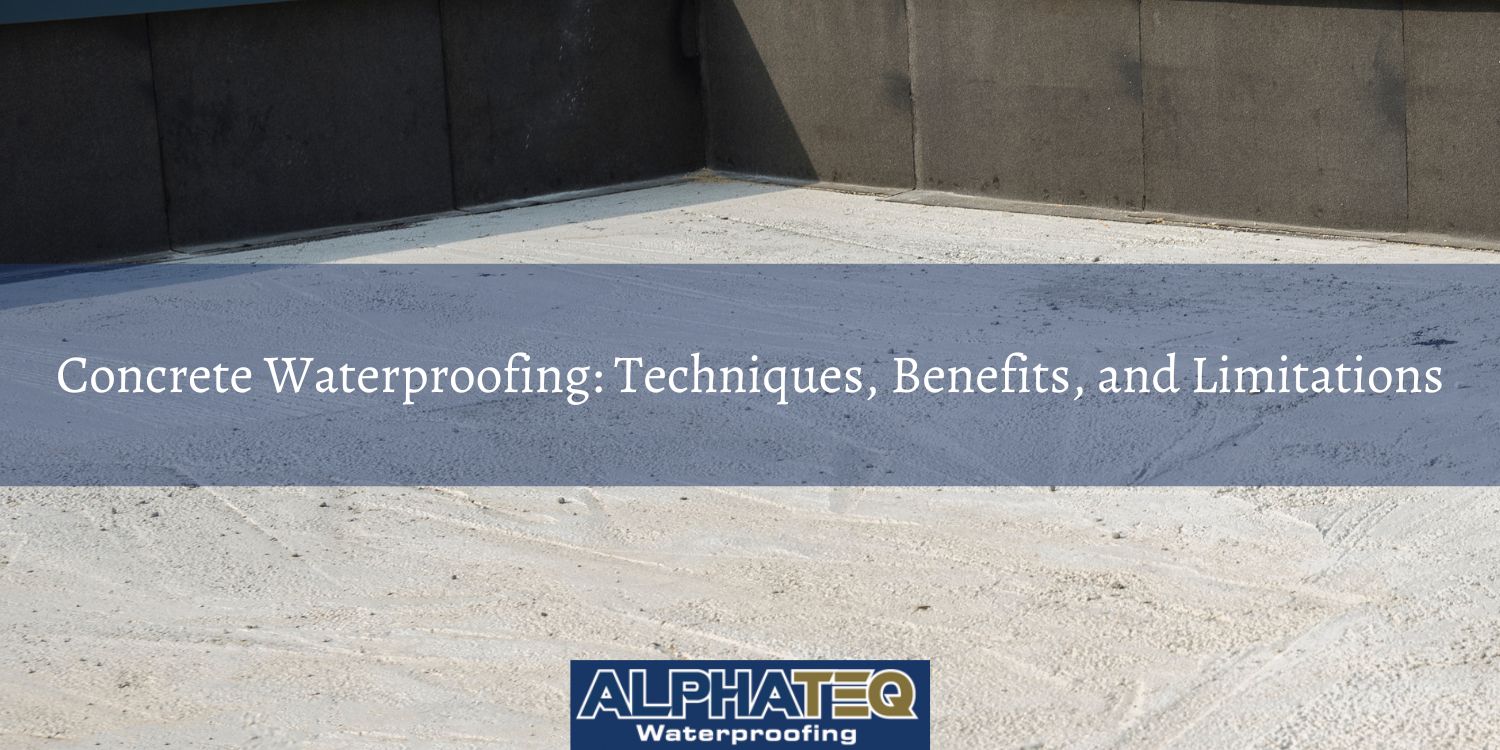
Concrete waterproofing is a specialised construction technique and treatment aimed at preventing water infiltration and damage to concrete structures. It involves the application of various waterproofing materials, coatings, or membranes to the surface of concrete, creating a protective barrier that repels water and prevents it from seeping into the concrete matrix. This process is crucial for maintaining the durability, structural integrity, and longevity of concrete structures, including buildings, bridges, basements, and underground utilities. Concrete waterproofing helps mitigate problems such as cracking, corrosion of reinforcing steel, and the growth of mould or mildew caused by moisture, ensuring that the concrete remains resilient and resistant to water-related deterioration over time.
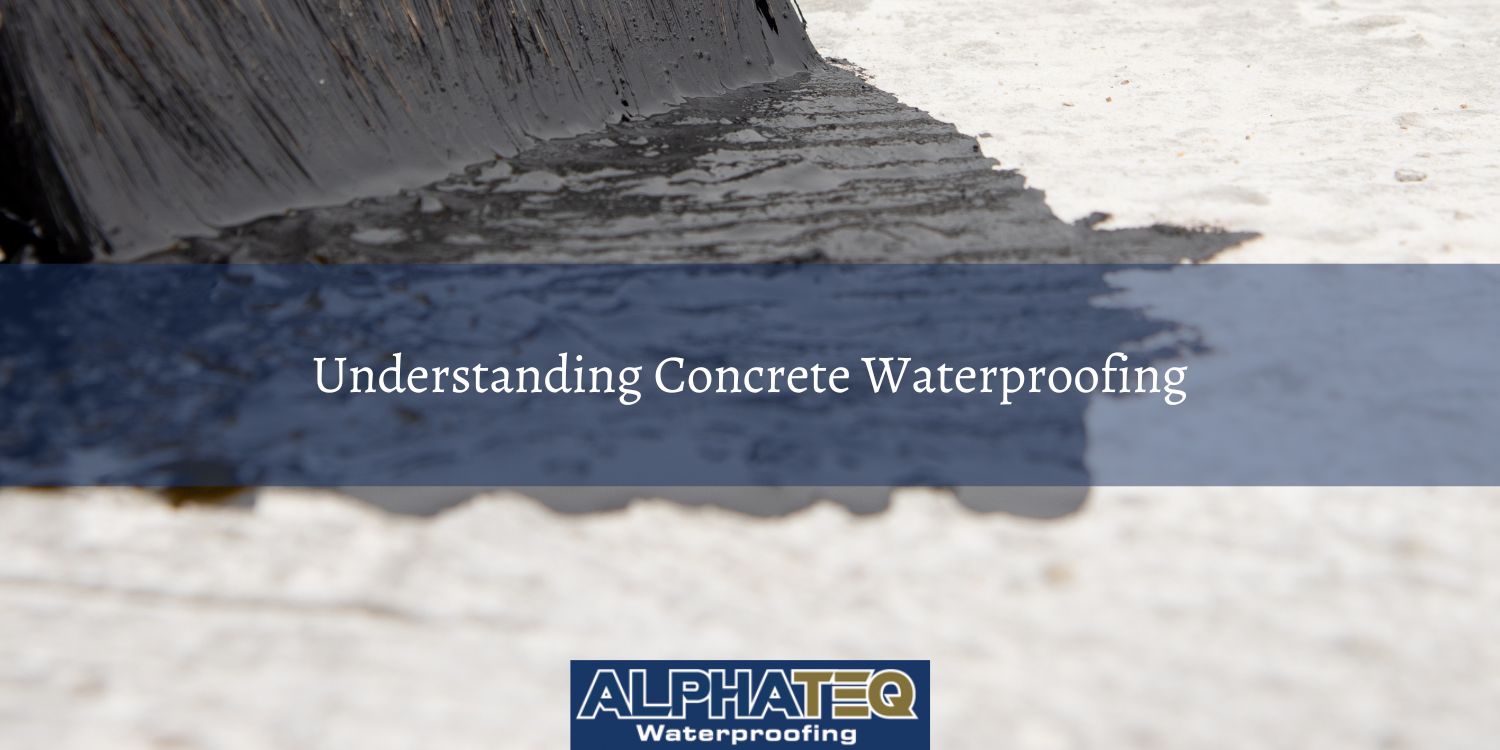
Concrete waterproofing is a crucial aspect of construction and maintenance for various structures, preventing water infiltration and its associated problems. In this section, we'll delve into the fundamentals of concrete waterproofing, explaining what it entails, why it's essential, and the potential consequences of neglecting it.
Concrete waterproofing refers to the process of applying specialised materials, coatings, or systems to concrete surfaces to create a protective barrier that prevents the penetration of water or moisture. This treatment ensures that the concrete remains impervious to water, reducing the risk of damage, deterioration, or structural issues caused by moisture infiltration.
Waterproofing concrete is necessary for several reasons. Concrete is a porous material by nature, making it susceptible to water penetration. Moisture can lead to various problems, including concrete cracking, corrosion of reinforcing steel, efflorescence (the formation of white, powdery deposits on the surface), and the growth of mould or mildew. Waterproofing concrete helps extend the lifespan of structures, maintains their structural integrity, and prevents water-related damage, making it a critical consideration in construction and maintenance.
The consequences of poor or no concrete waterproofing can be significant. Without proper waterproofing, water can infiltrate concrete structures, causing cracks, spalling (surface deterioration), and corrosion of embedded steel reinforcement. Over time, this can compromise the structural stability of the building or infrastructure. Additionally, moisture can create a conducive environment for the growth of mould and mildew, leading to health hazards and aesthetic issues. Adequate concrete waterproofing is essential to prevent these problems and ensure the long-term durability and functionality of concrete structures.
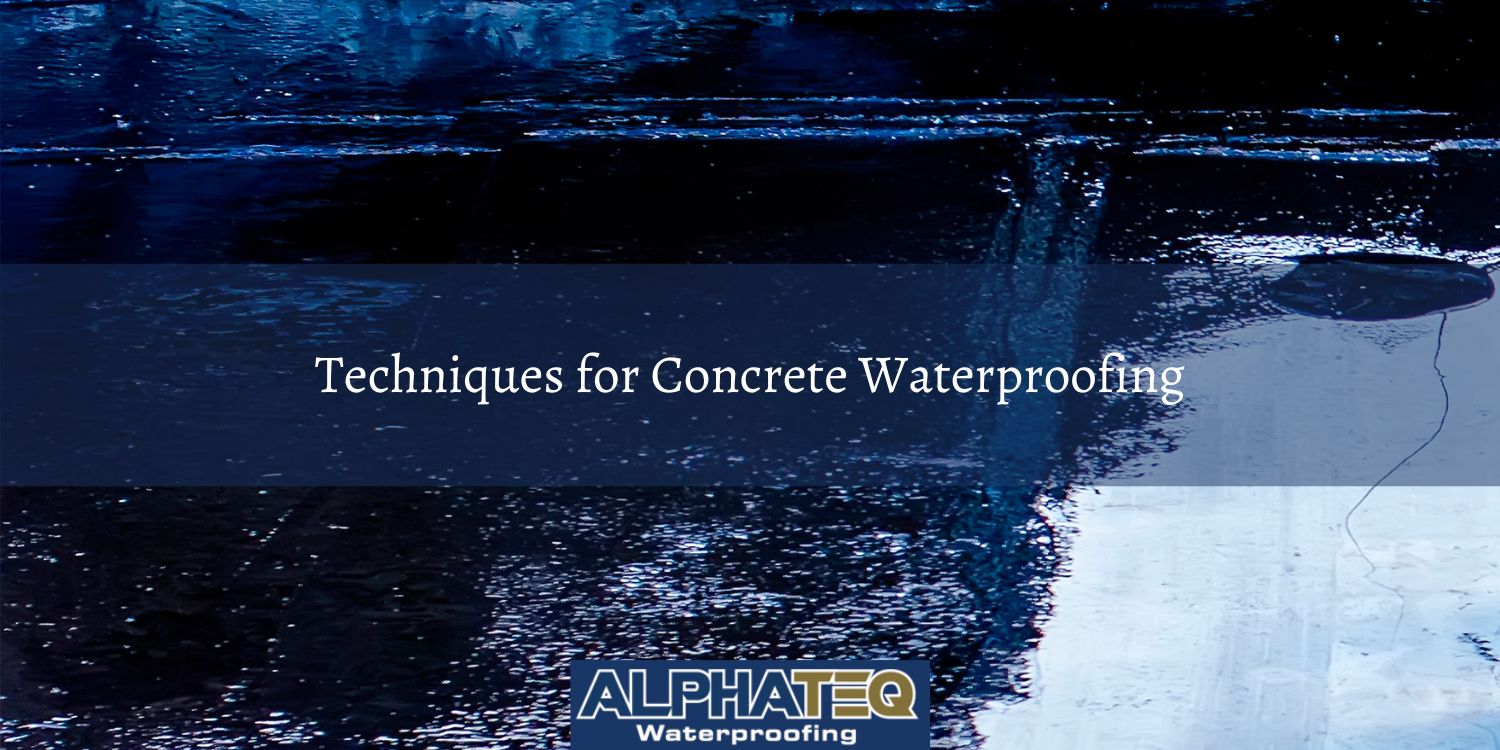
Concrete waterproofing employs a range of techniques and materials to create a protective barrier against moisture infiltration. In this section, we'll explore various methods and systems used for concrete waterproofing, including coatings, crystalline waterproofing, sealers, cementitious waterproofing, and waterproofing admixtures.
Concrete waterproofing coatings involve the application of specialised liquid or semi-liquid materials directly onto the concrete surface. These coatings form a seamless, waterproof membrane that prevents water penetration. They come in various formulations, including acrylic, epoxy, and polyurethane coatings, each offering unique advantages such as chemical resistance, flexibility, and durability. Coatings are suitable for both new construction and the maintenance of existing concrete structures.
Crystalline waterproofing is a unique technique that utilises chemicals or compounds with the ability to crystallise when in contact with water. These crystalline materials penetrate the concrete matrix, filling micro-cracks and capillaries, and effectively blocking water pathways. Over time, these crystals continue to grow and self-seal any potential water-entry points. Crystalline waterproofing is particularly effective for addressing minor cracks and can provide long-term protection.
Concrete sealers are surface treatments that create a protective barrier on the exterior of concrete structures. They work by forming a thin film or penetrating the concrete surface to reduce water absorption and prevent moisture infiltration. Sealers come in various types, including acrylic, silane, siloxane, and epoxy-based sealers, each offering specific benefits such as UV resistance and breathability. Sealers are commonly used for decorative concrete surfaces, driveways, and sidewalks.
Cementitious waterproofing systems involve the use of cement-based materials mixed with polymers or additives to create a waterproof barrier. These materials are applied as a slurry or mortar directly to the concrete surface. Once cured, they form a dense and impermeable layer that resists water penetration. Cementitious waterproofing is often used for below-grade applications, such as basements and foundations.
Waterproofing admixtures are specialised chemicals or additives mixed directly into the concrete during the batching process. These admixtures alter the concrete's properties, making it inherently resistant to water penetration. They work by reducing the capillary pore size within the concrete and improving its impermeability. Waterproofing admixtures are a proactive and long-lasting approach to concrete waterproofing, ideal for projects where a continuous and integrated waterproofing solution is desired.
Each of these concrete waterproofing techniques offers unique advantages and applications, allowing for tailored solutions to address specific moisture-related challenges in construction and maintenance.

Concrete waterproofing is a systematic process that involves several critical steps to ensure the effectiveness of the waterproofing system. In this section, we'll outline the key stages in the process of concrete waterproofing, including surface preparation, the application of the waterproofing system, and the curing period with inspection.
Surface preparation is a fundamental step in concrete waterproofing. It involves thoroughly cleaning and preparing the concrete substrate to ensure proper adhesion and effectiveness of the waterproofing system. The surface must be free of dust, debris, contaminants, and any loose or deteriorated concrete. Additionally, cracks and voids should be repaired, and the surface may be levelled to create a smooth and even base. Proper surface preparation is essential to maximize the bond between the substrate and the waterproofing material, preventing potential issues in the future.
The application of the waterproofing system is a critical phase in concrete waterproofing. It involves the even and uniform application of the selected waterproofing material or system onto the prepared concrete surface. Techniques such as brushing, spraying, rolling, or troweling may be used, depending on the chosen waterproofing material. Proper application ensures complete coverage and the correct thickness of the waterproofing layer, creating a seamless and watertight barrier that effectively prevents moisture infiltration.
After the application of the waterproofing system, a curing period is essential to allow the material to set and adhere correctly to the concrete substrate. The duration of the curing period may vary depending on the type of waterproofing material and environmental conditions. During this time, the waterproofing material undergoes chemical reactions and bonds with the concrete, ensuring a durable and long-lasting seal. Regular inspection should occur throughout the curing period to verify that the waterproofing material is setting properly, adhering correctly, and achieving the desired thickness. Any defects or discrepancies should be promptly addressed to maintain the integrity of the waterproofing system.
By adhering to a systematic approach during the process of concrete waterproofing, including thorough surface preparation, proper application, and diligent curing period with inspection, the likelihood of achieving a long-lasting, effective, and watertight solution is significantly increased, ensuring the protection and durability of the concrete structure.
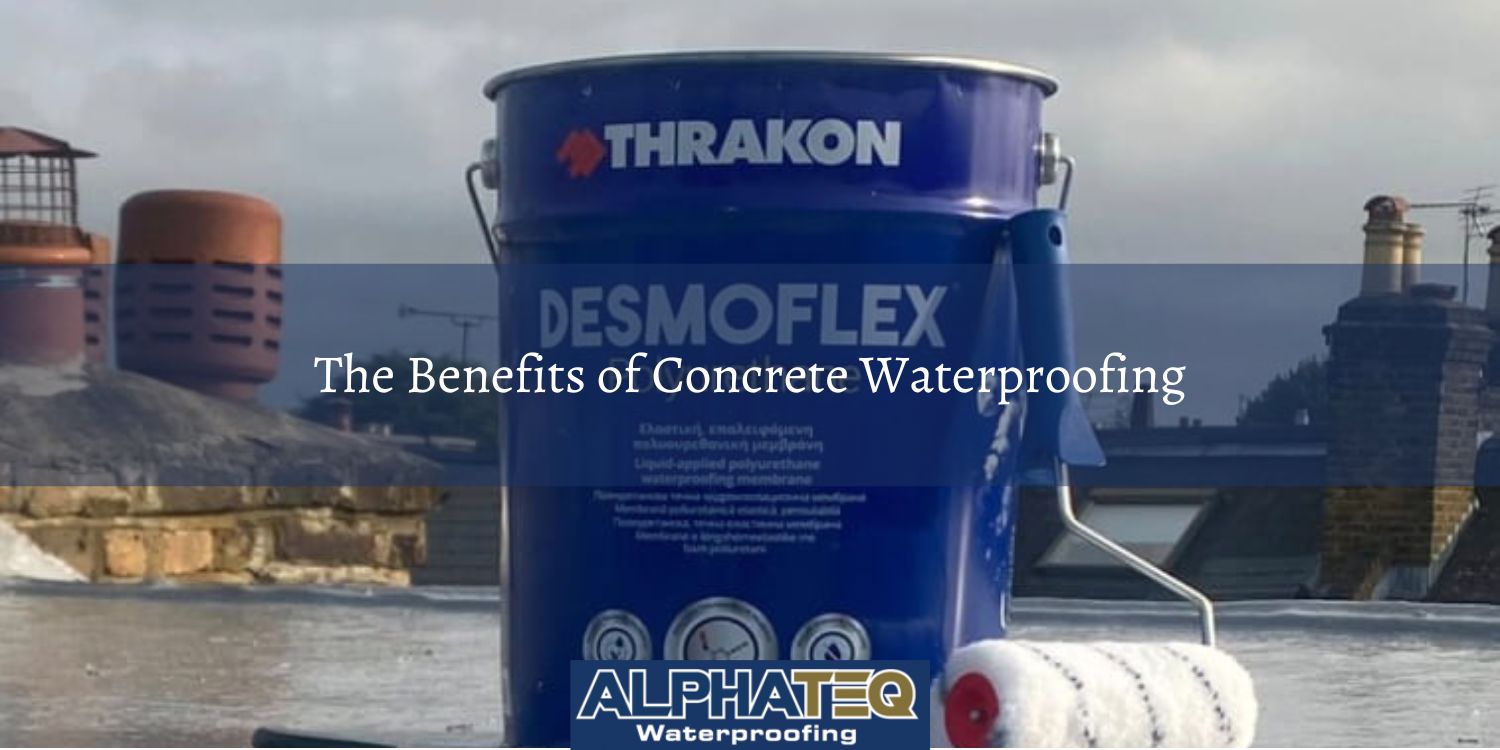
Concrete waterproofing offers a multitude of advantages that contribute to the longevity and performance of concrete structures. In this section, we'll explore the key benefits of implementing concrete waterproofing solutions, including the extended longevity of the structure, prevention of water damage and structural issues, increased property value, and reduced maintenance costs.
One of the primary advantages of concrete waterproofing is the extended longevity of the structure. By effectively preventing water infiltration, waterproofing systems protect the concrete from the corrosive effects of moisture, reducing the risk of structural damage, cracking, and deterioration over time. This preservation ensures that the concrete structure can continue to serve its intended purpose for an extended period without the need for premature repairs or replacements.
Concrete structures are vulnerable to various problems caused by moisture infiltration. Concrete waterproofing prevents water damage and structural issues by creating a robust barrier against water penetration. This protection safeguards against problems such as surface cracks, corrosion of reinforcing steel, efflorescence (white powdery deposits on the surface), and the growth of mold or mildew. The prevention of these issues ensures that the structure remains resilient, structurally sound, and aesthetically pleasing.
Concrete waterproofing contributes to reduced maintenance costs over the life of the structure. Properly waterproofed concrete structures require less frequent maintenance, as they are better equipped to withstand environmental stressors, including moisture exposure, freeze-thaw cycles, and chemical contaminants. This translates into fewer expenses related to repairs, surface treatments, and structural rehabilitations, resulting in long-term cost savings.
In summary, concrete waterproofing provides a comprehensive array of advantages, including the extended longevity of the structure, the prevention of water damage and structural issues, and reduced maintenance costs. These benefits collectively make concrete waterproofing a valuable investment for preserving and enhancing the durability and performance of concrete structures.
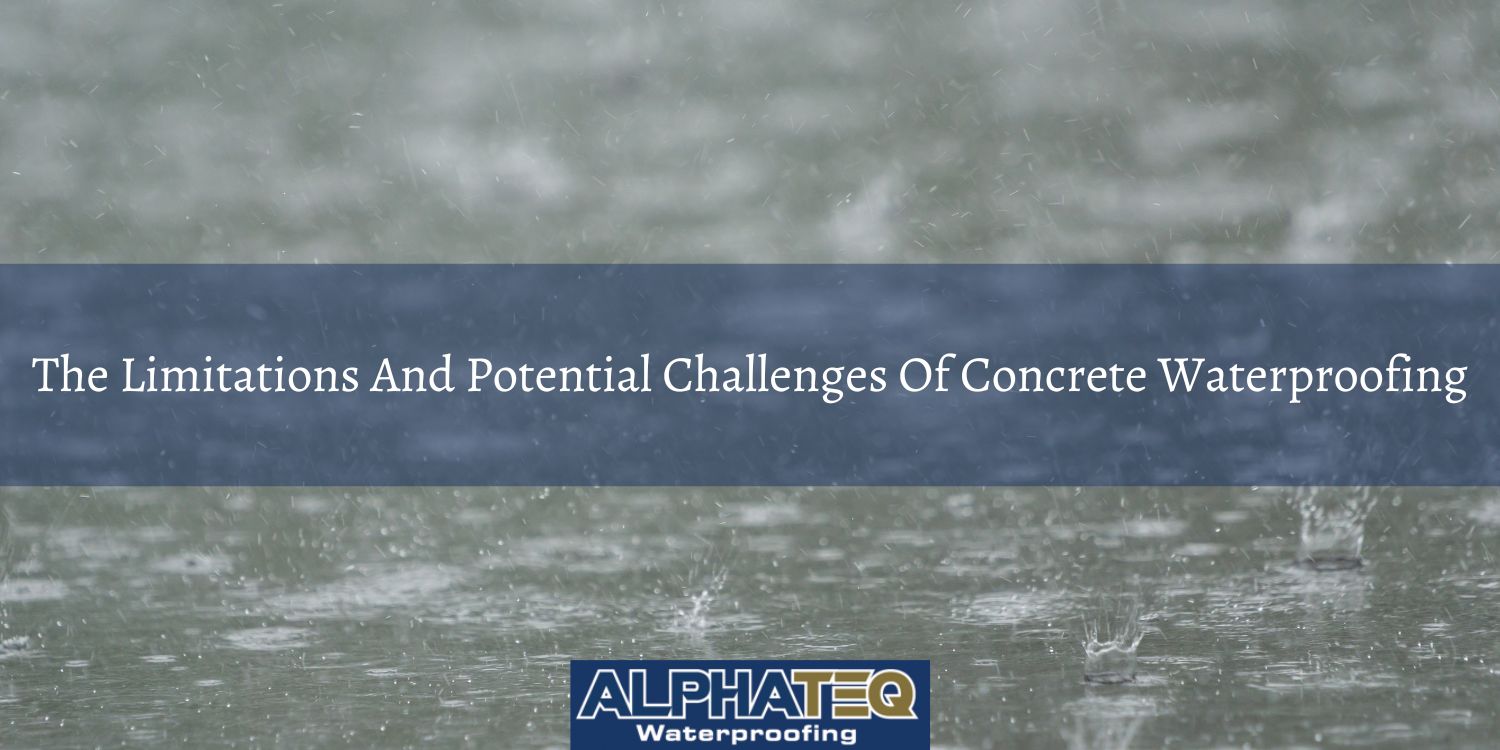
While concrete waterproofing offers substantial benefits, it is essential to acknowledge the limitations and challenges that may be encountered during its implementation. In this section, we'll explore some of the key constraints and considerations associated with concrete waterproofing, including application conditions and constraints, the need for professional application, limitations of certain waterproofing systems, and cost considerations.
Concrete waterproofing can be sensitive to application conditions and constraints. Factors such as temperature, humidity, and weather conditions can affect the application and curing of waterproofing materials. Extreme temperatures or wet weather may impact the performance of certain waterproofing systems, potentially leading to suboptimal results. Careful planning and scheduling are necessary to ensure that the waterproofing process aligns with favourable environmental conditions.
In certain situations, professional application of concrete waterproofing is imperative. While some waterproofing methods can be applied by skilled homeowners or contractors, others require specialised knowledge and equipment. Inadequate or incorrect application can result in defects, improper coverage, or adhesion issues, compromising the effectiveness of the waterproofing system. Relying on trained and experienced professionals is essential to overcome this challenge and achieve the desired level of protection.
Not all waterproofing systems are suitable for every type of concrete structure. For example, traditional bituminous sheet membranes may not be well-suited for concrete structures with complex geometries or irregular surfaces, as they can be challenging to install effectively in such cases. Similarly, crystalline waterproofing systems may not be the ideal choice for concrete structures exposed to aggressive chemical environments, as they may not provide sufficient resistance against chemical infiltration. Factors such as the type of concrete, the location of the structure, or the intended use may necessitate the selection of a particular waterproofing method. Understanding these limitations and tailoring the choice of waterproofing system to the unique characteristics of the structure is essential to achieving effective and long-lasting waterproofing.
Concrete waterproofing, while offering long-term benefits, is not without cost considerations. High-quality materials, professional application, and additional protection layers can contribute to the overall project cost. However, it's essential to view this cost as an investment in the durability and longevity of the concrete structure. Failing to invest in proper waterproofing can lead to more significant expenses related to structural repairs, maintenance, and premature replacements in the future.
In conclusion, while concrete waterproofing provides substantial advantages, it is crucial to address and plan for limitations and challenges, including application conditions and constraints, the need for professional application, limitations of specific waterproofing systems, and cost considerations to ensure the successful implementation of these crucial systems.

To ensure the effectiveness and longevity of concrete waterproofing systems, it's essential to follow best practices throughout the installation, maintenance, and inspection processes. In this section, we'll explore key guidelines and best practices for successful concrete waterproofing, including the importance of proper installation and application, tips for long-term maintenance and care, and the significance of thorough inspections and quality control.
Proper installation and application of waterproofing materials are paramount to the success of any concrete waterproofing project. It's crucial to adhere to manufacturer recommendations and industry standards during the installation process. Ensuring that the substrate is adequately prepared, cracks are addressed, and the chosen waterproofing system is applied correctly helps create a reliable and watertight barrier. Whether utilising liquid polyurethane technologies or other waterproofing methods, following established guidelines and employing skilled professionals is essential to achieve the desired level of protection.
Long-term maintenance and care play a significant role in preserving the effectiveness of concrete waterproofing systems. Regularly scheduled maintenance activities can extend the life of the waterproofing and prevent potential issues. Depending on the type of waterproofing used, maintenance tasks may include cleaning, surface inspections, and reapplication of protective coatings or sealers as needed. Proper drainage systems should be maintained to prevent water buildup around the structure. Additionally, any repairs, such as addressing new cracks or damage, should be promptly addressed to ensure continuous protection.
Thorough inspections and quality control measures are essential components of concrete waterproofing best practices. Inspections should be conducted periodically to assess the condition of the waterproofing system and the concrete substrate. These inspections can reveal any signs of deterioration, damage, or areas requiring maintenance. Quality control should be exercised during the installation phase to verify that the waterproofing material is applied correctly and meets the required standards. Addressing any defects or discrepancies early in the process ensures the long-term integrity of the waterproofing system.
By adhering to these best practices, including the importance of proper installation and application, tips for long-term maintenance and care, and the significance of thorough inspections and quality control, concrete waterproofing projects can achieve their intended purpose and provide durable protection against moisture infiltration for years to come.